The Biden Tax Plan: How the Build Back Better Act Could Affect Your Tax Bill
Depending on your income, the Build Back Better Act recently passed by the House could boost or cut your future tax bills.
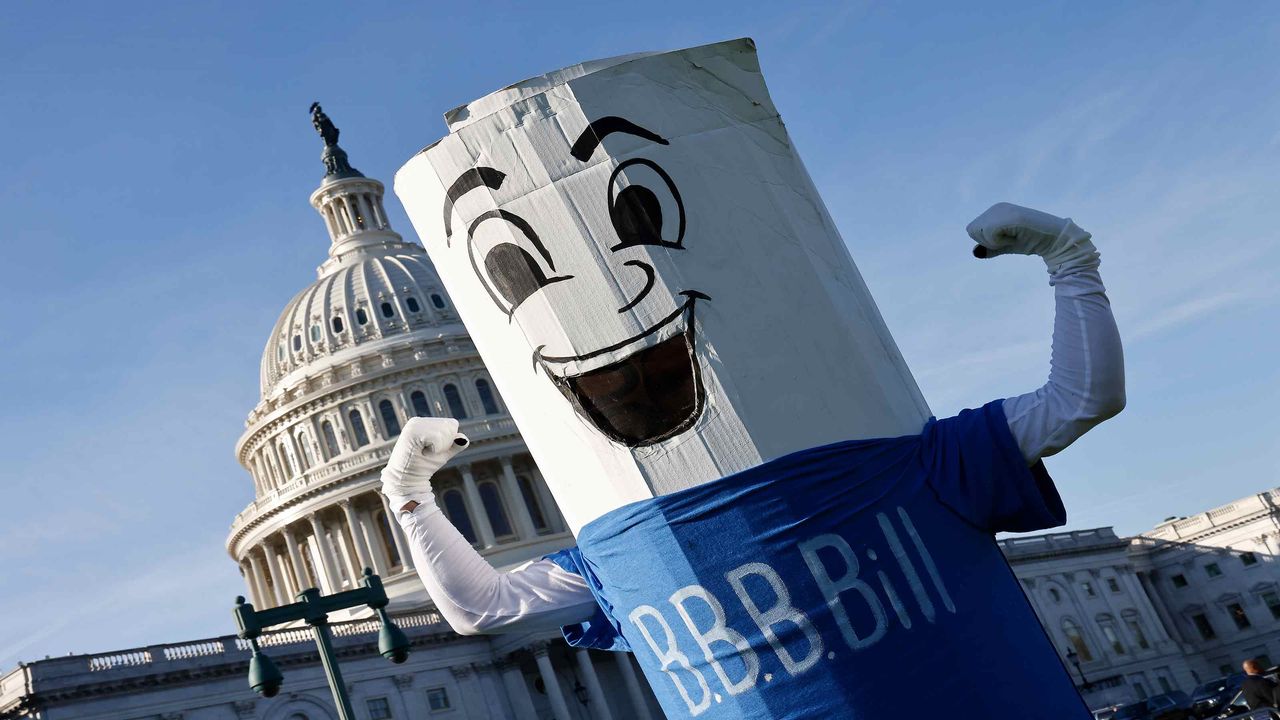

President Biden's "Build Back Better" social spending and tax bill is slowly working its way through Congress. It was recently passed by the House of Representatives and has been sent to the Senate. While there's still plenty of political wrangling to come, and additional changes are expected in the Senate, we now have a pretty good sense of where the Democrats are headed with this budget reconciliation bill. The proposed legislation calls for sharp spending increases for a wide variety of social programs that would impact childcare, health care, higher education, climate change, and more. The package also contains a number of tax law changes that would boost taxes for some people and cut them for others.
How might these changes affect your future income tax bills if the Build Back Better Act ultimately becomes law? First, the bill calls for higher taxes and fewer tax breaks for the wealthy. That's no surprise, because Biden and Congressional Democrats have said for months that they want to make the rich pay their "fair share" of taxes and use the additional revenue to strengthen the social safety net. The proposed legislation would also extend enhancements to certain tax credits for lower- and middle-income families. These enhancements were designed to help ordinary Americans pay for some of the day-to-day expenses they incur. There are also new or improved tax breaks for higher education costs, clean energy initiatives, and expenses paid by certain workers.
At this point, it's impossible to say which (if any) of the proposed tax law changes will survive and be enacted into law. Additional tax provisions could be added later, too. Nothing is set in stone yet. However, smart taxpayers will get up-to-speed on the Build Back Better bill's tax proposals now, so they're prepared if/when they make it through the legislative process. To get you started, we've identified some of the most common ways the Build Back Better plan could either raise or lower your taxes. After all, what you know now could save you big bucks down the road.
President Biden's "Build Back Better" social spending and tax bill is slowly working its way through Congress. It was recently passed by the House of Representatives and has been sent to the Senate. While there's still plenty of political wrangling to come, and additional changes are expected in the Senate, we now have a pretty good sense of where the Democrats are headed with this budget reconciliation bill. The proposed legislation calls for sharp spending increases for a wide variety of social programs that would impact childcare, health care, higher education, climate change, and more. The package also contains a number of tax law changes that would boost taxes for some people and cut them for others.
How might these changes affect your future income tax bills if the Build Back Better Act ultimately becomes law? First, the bill calls for higher taxes and fewer tax breaks for the wealthy. That's no surprise, because Biden and Congressional Democrats have said for months that they want to make the rich pay their "fair share" of taxes and use the additional revenue to strengthen the social safety net. The proposed legislation would also extend enhancements to certain tax credits for lower- and middle-income families. These enhancements were designed to help ordinary Americans pay for some of the day-to-day expenses they incur. There are also new or improved tax breaks for higher education costs, clean energy initiatives, and expenses paid by certain workers.
At this point, it's impossible to say which (if any) of the proposed tax law changes will survive and be enacted into law. Additional tax provisions could be added later, too. Nothing is set in stone yet. However, smart taxpayers will get up-to-speed on the Build Back Better bill's tax proposals now, so they're prepared if/when they make it through the legislative process. To get you started, we've identified some of the most common ways the Build Back Better plan could either raise or lower your taxes. After all, what you know now could save you big bucks down the road.
Imposing a Surtax on Wealthy Americans
Negotiations over how to pay for the planned social spending provisions were contentious at times. There always seemed to be general agreement among the president and most Congressional Democrats that higher taxes on the wealthiest Americans should be part of the plan. But nailing down exactly how to tax them proved to be difficult. The Democrats bounced back and forth between a laundry list of proposals, including raising the top income tax rate, taxing capital gains at ordinary rates, eliminating stepped-up basis on inherited property, and a "billionaires tax" on the value of unsold assets.
The Build Back Better plan passed by the House settles on a "surtax" on millionaires and billionaires starting in 2022. The extra tax would equal 5% of modified adjusted gross income from $10 million to $25 million ($5 million to $12.5 million for married taxpayers filing a separate return). It would then jump to 8% for modified AGI above $25 million ($12.5 million for married taxpayers filing separately). Modified AGI would mean regular AGI reduced by any deduction allowed for investment interest.
Expanding the Surtax on Net Investment Income
In addition to the capital gains tax, wealthier Americans may also be hit with an additional 3.8% surtax on net investment income (NII includes, among other things, taxable interest, dividends, gains, passive rents, annuities, and royalties.) This surtax only applies if you're a single or head-of-household filer with a modified AGI over $200,000, a joint filer with a modified AGI over $250,000, or a married person filing a separate return with a modified AGI over $125,000.
Starting in 2022, the Build Back Better Act would expand the surtax to cover net investment income derived in the ordinary course of a trade or business for single or head-of-household filer with a modified AGI over $400,000, a joint filer with a modified AGI over $500,000, or a married person filing a separate return with a modified AGI over $250,000.
The legislation also clarifies that the surtax doesn't apply to wages on which Social Security and Medicare payroll taxes (i.e., FICA taxes) are already imposed.
Permanently Disallowing Excess Business Loss Deduction
Another provision in the Build Back Better Act to limit business loss deductions would heap more taxes (mostly) on the rich. Under current law, non-corporate business owners can't deduct losses exceeding $250,000 ($500,000 for joint filers) on Schedule C. Any excess losses can be treated as a net operating loss in later tax years, though.
This business loss limitation rule is currently set to expire in 2027. However, under the Build Back Better Act, the rule would be made permanent retroactively beginning with the 2021 tax year. In addition, the legislation would only allow excess losses to be treated as a deduction for the next tax year and repeal the limit on excess farm losses by farmers who received certain subsidies.
Denying Tax Break for Sale of Small Business Stock by Wealthy Taxpayers
President Biden's proposal would also choke off a tax break for higher-income Americans who invest in small businesses. Currently, there's no tax on any gain from the sale or exchange of certain small business stock if you acquired the stock after September 27, 2010, and held it for more than five years. (For qualifying stock acquired from February 18, 2009, to September 27, 2010, 75% of the gain is tax-free.)
The Build Back Better Act would deny wealthier investors this tax break. Under the bill, the exclusion from gross income generally wouldn't be allowed for gains from the sale or exchange of qualified small business stock after September 13, 2021, if your modified AGI is $400,000 or more. There would be one exception, though. The new rule wouldn't apply to any sale or exchange made pursuant to a written binding contract that was in effect on September 13, 2021, and not modified in any material respect after that date.
Curbing Mega-IRAs, Backdoor Roths and Other Retirement Savings for the Rich
If enacted, the Build Back Better package would curb a wealth person's ability to stuff money in tax-advantage retirement savings accounts in a few ways. First, beginning in 2029, a new limit on IRA contributions would kick in if the total value of your IRA and defined contribution plans (e.g., 401(k), 403(b), and 457 plans) hits $10 million and your modified AGI exceeds:
- $400,000 for single filers;
- $425,000 for head-of-household filers; or
- $450,000 for joint filers.
A new "required minimum distribution" (RMD) rule would be put in place for mega-IRAs and 401(k) plans starting in 2029, too. Under the proposal, a retirement plan distribution would be required if the combined total of your IRAs and defined contribution plans reached $10 million and your income exceeded the applicable threshold listed above ($400,000, $425,000, or $450,000). Generally, the distribution would equal 50% of the retirement savings over $10 million, but larger distributions could be required if savings surpass $20 million.
The Build Back Better plan would also restrict Roth conversions for wealthier Americans. First, beginning in 2022, it would put a stop to "backdoor" Roth IRA conversions. This popular tactic allows wealthier people avoid the Roth IRA contribution limits by making nondeductible contributions to a traditional IRA and then transferring those contributions to a Roth IRA later. However, under the proposed legislation, you won't be able to convert after-tax contributions in an IRA or qualified retirement plan to a Roth account, regardless of your income. Then, starting in 2032, the proposed plan would eliminate all Roth conversions if your income exceeded the applicable threshold provided above ($400,000, $425,000, or $450,000).
Modifying the SALT Deduction Cap
Here's a proposed change that goes against the grain – rolling back the state and local tax (SALT) deduction limit. It's odd because the change would, for the most part, provide a tax cut for wealthy people.
The 2017 tax reform law placed a temporary $10,000 cap on the itemized deduction for state and local taxes until 2026. By limiting the deduction, the cap tends to increase taxes paid by wealthier people, who typically pay more state and local taxes and tend to itemize instead of claiming the standard deduction. Under the Build Back Better Act, the cap would be extended through 2031. It would also be increased from $10,000 to $80,000 for 2021 to 2030 (it would go back down to $10,000 for 2031).
Extending the Earned Income Tax Credit Enhancements
The Build Back Better plan doesn't just focus on rich people. Jumping to the other end of the income spectrum, the enhancements made to the 2021 earned income tax credit (EITC) that benefit childless workers would be extended for one more year under the plan. The EITC is only available to low- to middle-income workers and families, and the enhancements that would stretch into 2022 were part of the American Rescue Plan, which was enacted in March 2021.
In a nutshell, the EITC improvements for workers with no qualifying children that would be extended to 2022 include:
- Lowering the minimum age from 25 to 19 (except for certain full-time students);
- Eliminating the maximum age limit (65), so older people without qualifying children can also claim the credit;
- Increasing the maximum credit from $543 to $1,502 for the 2021 tax year (the maximum would be adjusted for inflation for the 2022 tax year); and
- Expanding eligibility rules for former foster youth and homeless youth.
You would also be allowed to base your 2022 EITC on your 2021 income (instead of your 2022 income) if that would increase your credit amount. That's similar to the rules applicable to the 2020 and 2021 EITC that permitted use of a person's 2019 income to calculate the credit. This would help people who are laid off, furloughed, or otherwise experienced a loss of income in 2022.
Extending Child Tax Credit Enhancements and Monthly Payments
President Biden also wants to extend enhancements to another popular tax credit for American families – the child tax credit. That would mean monthly advance payments in 2022, too. The credit would also be made fully refundable on a permanent basis. It's fully refundable for 2021, but normally only up to $1,400-per-child is refundable, and you must have at least $2,500 of earned income. (With refundable credits, the IRS will send you a refund check if the credit is worth more than your income tax liability.) The president wants to repeal the requirement that each qualifying child have a Social Security number, too.
The American Rescue Plan pushed the amount of the child tax credit for the 2021 tax year from $2,000 to $3,000-per-child for most kids – and to $3,600 for children 5 years old and younger. Those higher credit amounts would continue through 2022 under the president's plan. However, as with the 2021 credit, the extra $1,000 or $1,600 for 2022 would be phased-out for families with higher incomes. For people filing their tax return as a single person, the additional amount would be reduced if their AGI is above $75,000. The phase-out would start at $112,500 of AGI for head-of-household filers and $150,000 of AGI for married couples filing a joint return. The 2022 credit amount would be reduced further using the pre-2021 phase-out rules if AGI exceeds $400,000 on joint tax returns or $200,000 on single and head-of-household returns. Your 2021 AGI (rather than your 2022 income) would be used for phase-out rule purposes if you so elected.
Under the Biden plan, monthly child tax credit payments during 2022 would max out at $250-per-month for each child between six and 17 years of age, and $300-per-month for each child five years old or younger. However, unlike payments in 2021, monthly payments generally wouldn't be sent to families in 2022 if their AGI exceeds $75,000 (single filers), $112,500 (head-of-household filers), or $150,000 (joint filers).
With regard to the "safe harbor" rules that let lower-income families keep any excess advance payments, the president's plan calls for an exception if a child is taken into account for purposes of the advance payments through fraud or the intentional disregard of rules and regulations. The safe harbor amount would also increase from $2,000 to $3,000 ($3,600 for a child five years old or younger).
Extending Premium Tax Credit Enhancements
The American Rescue Plan made temporary improvements to the premiums tax credit, too. This credit helps people pay premiums for health insurance purchased through an Obamacare exchange (e.g., HealthCare.gov). The current Build Back Better Act aims to extend the current enhancements from one to four years.
Provisions that are up for extension under the plan would:
- Lower the percentage of annual income that eligible Americans must contribute toward their premium (extend through 2025);
- Permit people with an income above 400% of the federal poverty line to claim the credit (extend through 2025); and
- Disregard household income exceeding 150% of the federal poverty line for people receiving unemployment benefits (extend through 2022; income exceeding 133% of the federal poverty line is disregarded for the 2021 tax year).
There are new enhancements for the 2022 to 2025 tax years in the president's plan, too. For instance, there are various provisions in the plan that would temporarily modifies certain eligibility rules and requirements to help lower-income people qualify for the credit. The president also wants to lower the threshold used to determine whether a taxpayer has access to affordable insurance through an employer-sponsored plan or a qualified small employer health reimbursement arrangement. Under Biden's plan, an employee's required contribution with respect to such a plan or arrangement couldn't exceeds 8.5% of his or her household income from 2022 to 2025 (instead of 9.5%). Other provisions would exclude certain lump-sum Social Security benefit payments and the modified AGI of certain dependents 23 years old or younger from the calculation of household income.
In a related move, the Build Back Better plan would also make the health coverage tax credit permanent (the credit currently doesn't apply after 2021). This credit is only available if you're (1) eligible for Trade Adjustment Assistance allowances because of a qualifying job loss, or (2) between 55 and 64 years of age with a defined-benefit pension plans that was taken over by the Pension Benefit Guaranty Corporation. The Biden plan would also increase the amount of the credit from 72.5% to 80% of the amount paid for qualified health insurance coverage.
Adding Tax Breaks for Education
College students would get a few additional tax breaks under President Biden's plan. First, it would exclude federal Pell grants from gross income.
In addition, tuition and related expenses wouldn't be reduced by the amount of any Pell grant for purposes of calculating the American Opportunity Credit or the Lifetime Learning Credit.
And, finally, students convicted of a state or felony drug offense would be allowed to claim the American Opportunity Credit. These changes would apply beginning in 2022.
Adding or Improving Tax Breaks for Clean Energy and Energy Efficiency
One of the main goals of the president's Build Back Better plan is to address climate change. This clearly shows up in the many tax provisions in the plan designed to encourage clean energy and energy efficiency. For instance, the credit for nonbusiness energy property added to your home would be extended through 2031 (it's currently set to expire at the end of this year). In addition, the credit amount would jump from 10% to 30% of the cost of installing qualified energy efficiency improvements, the $500 lifetime cap would be replaced by a $1,200 annual credit limit, a $600-per-item limit would be placed on credits for qualified energy property, the credit would apply to the costs of home energy audits, and more.
The credit for residential energy efficiency property would also be extended under the current Build Back Better Act – this time through 2033 (it's current set to expire after 2023).This credit applies to the cost of solar, wind, geothermal or fuel cell technology used to generate power in your home. The president's plan would extend the credit to cover battery storage technology. The full 30% credit would also apply through the end of 2031, then the credit would drop to 26% in 2032 and 22% in 2033. It would also be made refundable beginning in 2024.
Other green energy or conservation tax proposals that would help individuals (as opposed to businesses) include:
- Excluding water conservation, storm water management, and wastewater management subsidies provided by public utilities, state or local governments, or storm water management providers from gross income;
- Creating a 30% tax credit for qualified wildfire mitigation expenditures;
- Establishing a tax credit of up to $12,500 (but not more than the cost of the car) for the purchase of a new plug-in electric motor vehicle;
- Creating a tax credit of up to $4,000 (but not more than the cost of the car) for the purchase of a used plug-in electric motor vehicle;
- Extending the tax credit for the purchase of a qualified fuel cell motor vehicle through 2031, but only with respect to vehicles not subject to depreciation;
- Reinstating the exclusion from gross income for bicycle commuting benefits (they are currently suspended until 2026), and increasing the maximum benefit from $20 to $81 per month (based on 2021 inflation adjusted amounts); and
- Establishing a tax credit of up to $900 for the purchase of an electric bicycle.
Adding Deductions for Union Dues and Work Uniforms
Workers would get two temporary above-the-line deductions if the Build Back Better Act is signed into law. The first would be for up to $250 of union dues. This deduction would be available from 2022 to 2025.
The second deduction would be for up to $250 uniforms or other work clothes that are required as a condition of employment and not suitable for everyday wear. This write-off would be available from 2022 to 2024.
Subjecting Cryptocurrency and Other Assets to Wash Sale Rules
People investing in commodities, currencies, and digital assets such as cryptocurrency would be subject to the "wash sale" rule if the Build Back Better Act becomes law. Currently, trading in those types of assets isn't covered by the rule.
Basically, the rule states that you can't deduct a loss from the sale or other disposition of stock or securities if you buy the same asset within 30 days before or after you sell it. Fortunately, though, if a deduction is denied because of the rule, the loss is added to the cost basis of the newly purchased stock. So, when you sell the new stock later, the tax on any gains will be lower.
Extending Time for Same-Sex Couples to File Amended Tax Returns
In 2013, the IRS began allowing same-sex couples who were legally married under state law to file joint tax returns. The tax agency also allowed same sex-couples to amend their tax returns to change their filing status to married filing jointly if they were married before 2013. However, they were generally only allowed to file amended returns going back to 2010.
Under the Build Back Better Act, same-sex couples who were lawfully married prior to 2010 would be able to change their filing status on pre-2010 returns if they were married during the tax year at issue. This would enable many couples, who were legally married as far back as 2004, to claim or increase credits, deductions, and other tax breaks that were not fully available to them on previous tax returns because they couldn't file a joint return.
Get Kiplinger Today newsletter — free
Profit and prosper with the best of Kiplinger's advice on investing, taxes, retirement, personal finance and much more. Delivered daily. Enter your email in the box and click Sign Me Up.
Rocky Mengle was a Senior Tax Editor for Kiplinger from October 2018 to January 2023 with more than 20 years of experience covering federal and state tax developments. Before coming to Kiplinger, Rocky worked for Wolters Kluwer Tax & Accounting, and Kleinrock Publishing, where he provided breaking news and guidance for CPAs, tax attorneys, and other tax professionals. He has also been quoted as an expert by USA Today, Forbes, U.S. News & World Report, Reuters, Accounting Today, and other media outlets. Rocky holds a law degree from the University of Connecticut and a B.A. in History from Salisbury University.
-
 RMD Deadline April 1: Five Tax Strategies to Manage Your 2025 Income
RMD Deadline April 1: Five Tax Strategies to Manage Your 2025 IncomeTaxable Income The April 1, 2025, deadline for required minimum distributions (RMDs) is fast approaching for retirees who turned 73 in 2024.
By Kelley R. Taylor Published
-
 Rising AI Demand Stokes Undersea Investments
Rising AI Demand Stokes Undersea InvestmentsThe Kiplinger Letter As demand soars for AI, there’s a need to transport huge amounts of data across oceans. Tech giants have big plans for new submarine cables, including the longest ever.
By John Miley Published
-
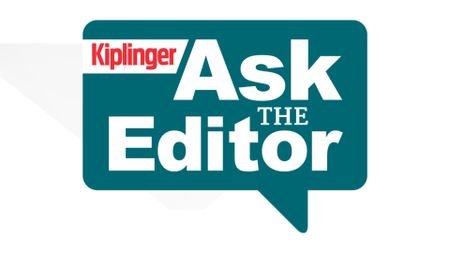 Ask the Editor: Taxes, March 28, 2025
Ask the Editor: Taxes, March 28, 2025Ask the Editor In our new Ask the Editor series, Joy Taylor, The Kiplinger Tax Letter Editor, answers questions related to filing of tax returns and paying taxes.
By Joy Taylor Published
-
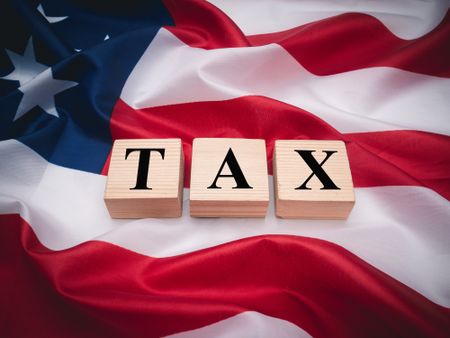 Six Hurdles for Trump's Tax Bill
Six Hurdles for Trump's Tax BillThe Tax Letter While the odds for a new tax bill in 2025 are quite good, there are some sticking points that President Trump and Congress will have to work through.
By Joy Taylor Published
-
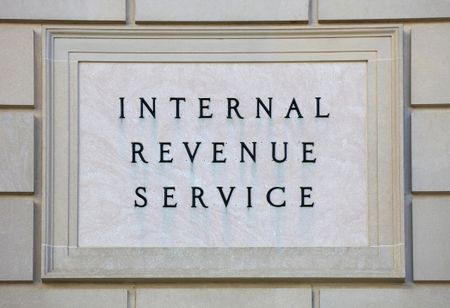 No New IRS Agents? What Trump’s Federal Hiring Freeze, Firings Mean for Your Taxes
No New IRS Agents? What Trump’s Federal Hiring Freeze, Firings Mean for Your TaxesIRS Will an executive order and firing IRS workers reshape the federal tax agency and impact how long it takes to get your tax refund?
By Kelley R. Taylor Last updated
-
 The Cheapest Places To Retire in the US
The Cheapest Places To Retire in the USWhen you're trying to balance a fixed income with an enjoyable retirement, cost of living is a crucial factor to consider.
By Stacy Rapacon Published
-
 New Law Delivers Tax Breaks to Natural Disaster Victims, But Is It Enough?
New Law Delivers Tax Breaks to Natural Disaster Victims, But Is It Enough?Tax Relief The legislation provides critical tax relief to thousands of natural disaster victims across the country.
By Gabriella Cruz-Martínez Last updated
-
 Can Tariffs Make Childcare More Affordable?
Can Tariffs Make Childcare More Affordable?Tariffs President-elect Trump suggested tariffs can address the childcare crisis, but economists are doubtful.
By Gabriella Cruz-Martínez Published
-
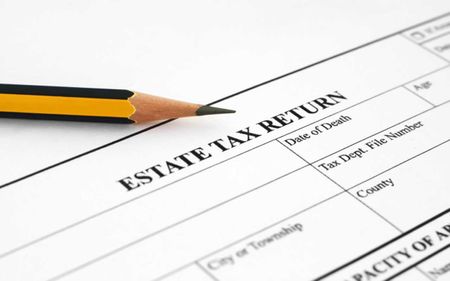 Changes to Estate Tax Are Coming... Six Options Congress Could Take
Changes to Estate Tax Are Coming... Six Options Congress Could TakeThe Tax Letter An important estate tax change is looming. Here are six ways that Congress might address estate taxes in 2025.
By Joy Taylor Published
-
 A Look at Kamala Harris's Tax Plans Ahead of the Election
A Look at Kamala Harris's Tax Plans Ahead of the ElectionThe Tax Letter Under Harris's tax proposals, upper-income individuals would pay more taxes, while the middle class and lower-income people would pay less.
By Joy Taylor Last updated

